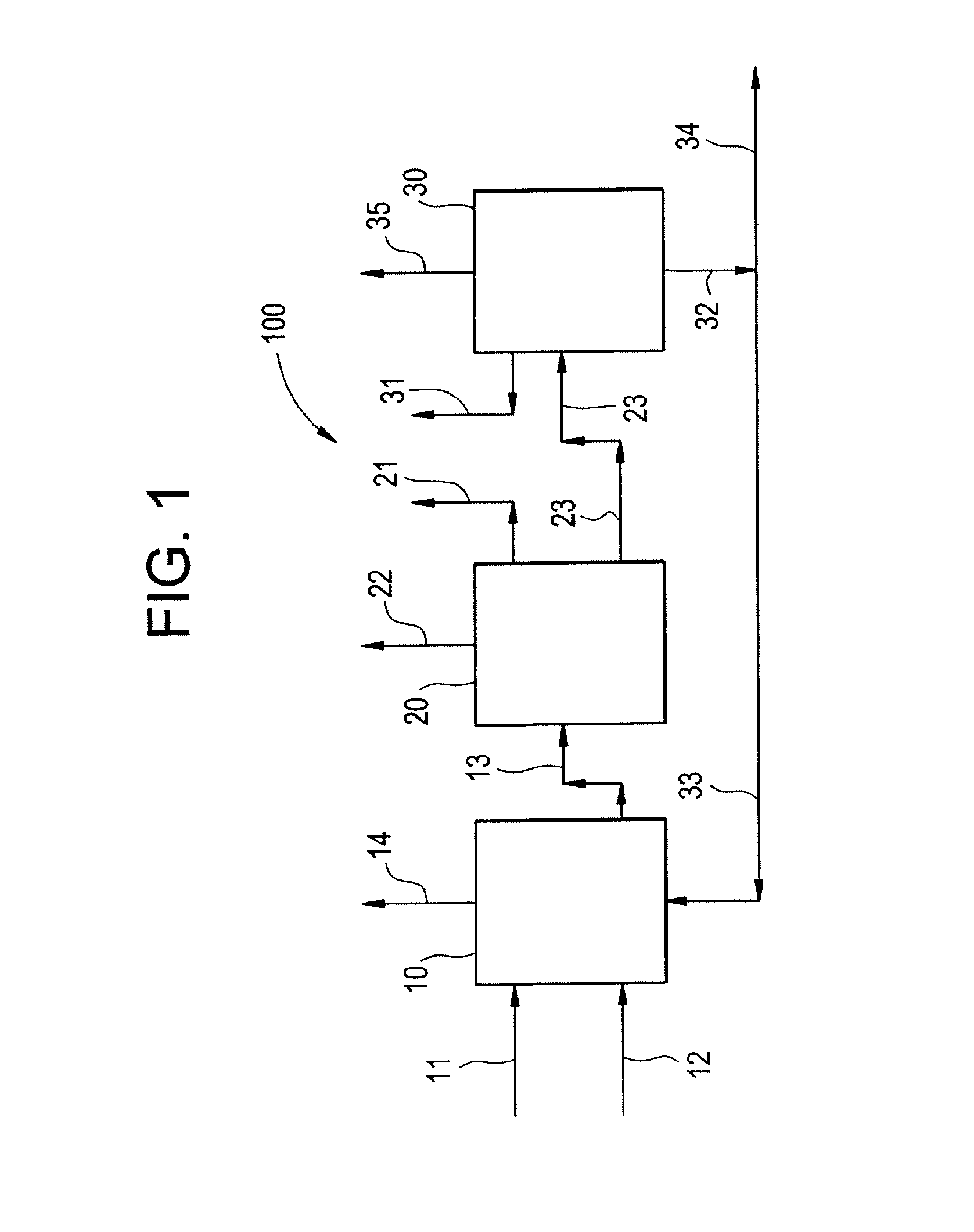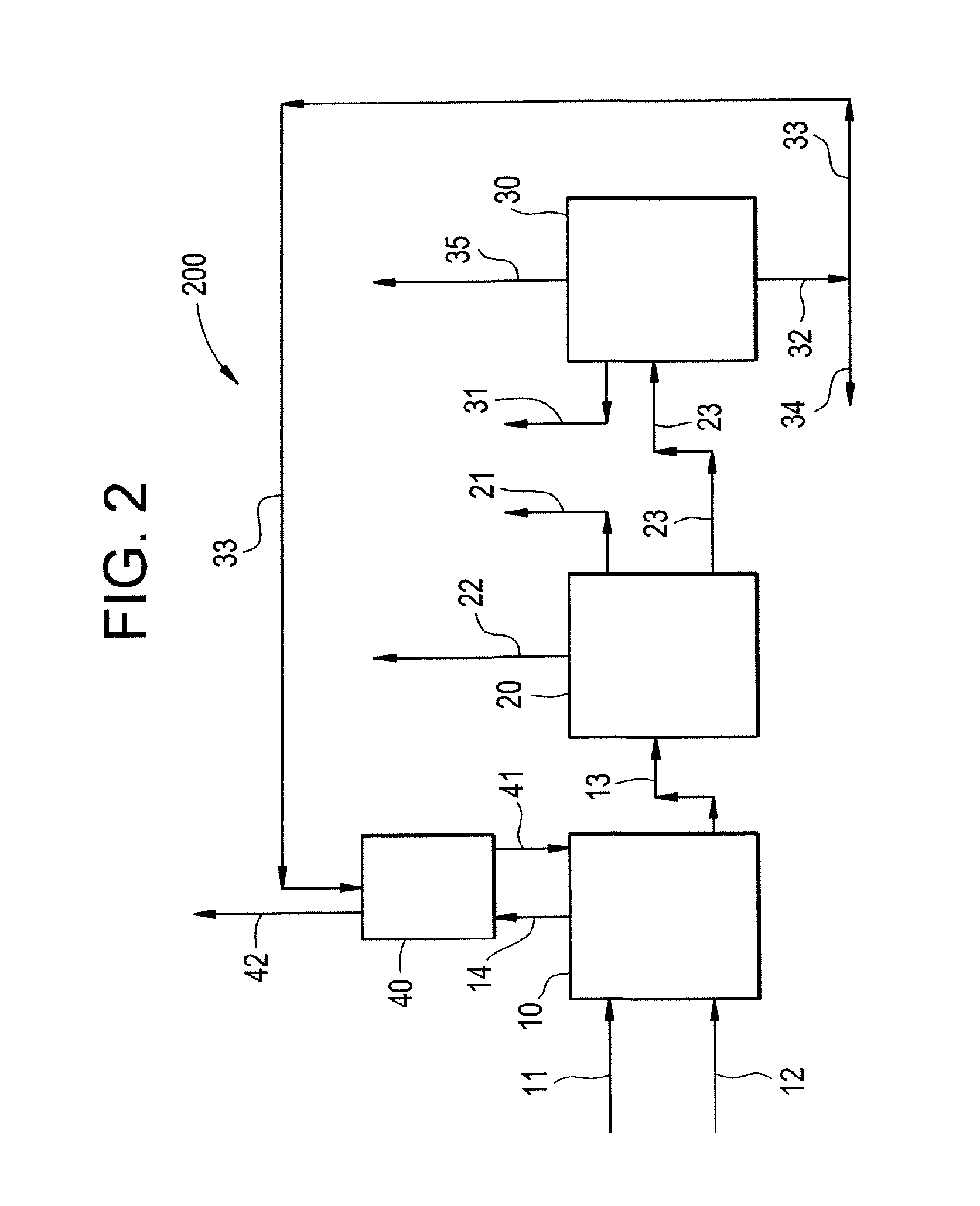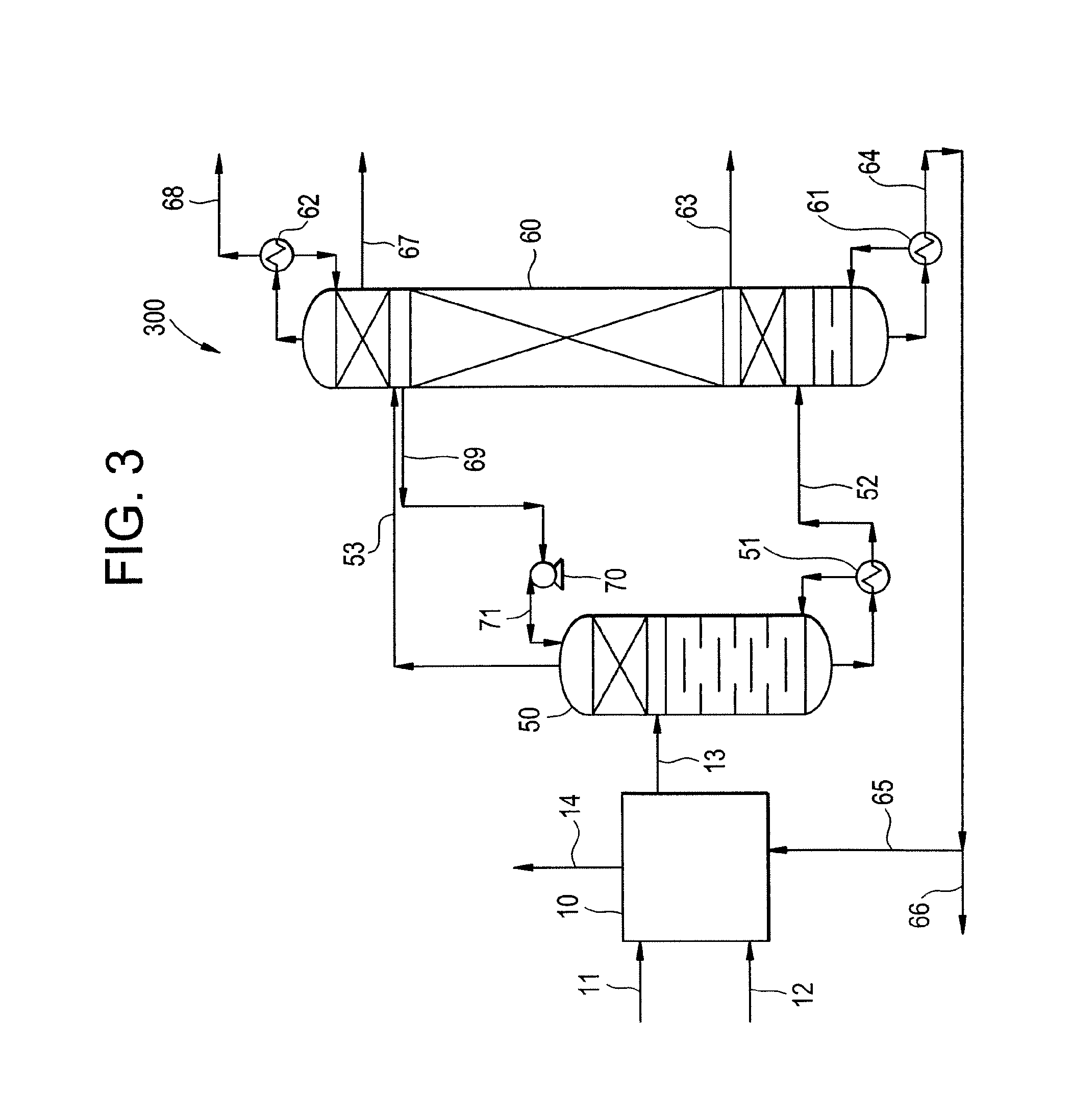Multi-stage process and apparatus for recovering dichlorohydrins
a dichlorohydrin and process technology, applied in the field of dichlorohydrin recovery processes and apparatuses, can solve the problems of large acetic acid consumption rate, and high cost of process operation, so as to reduce capital investment, reduce capital and operating costs, the effect of reducing the size of the column
- Summary
- Abstract
- Description
- Claims
- Application Information
AI Technical Summary
Benefits of technology
Problems solved by technology
Method used
Image
Examples
example 1
[0176]In this Example 1, a DCH recovery process is carried out according to the present invention using the feed composition and conditions shown in Table 1 above. The first distillation is carried out under moderate vacuum conditions followed by the second distillation column, which is carried out under low vacuum conditions.
[0177]The distillation column process conditions used in Example 1 are shown in Table 2 below:
[0178]
TABLE 2Distillation Column Process ConditionsDistillation columnFirstSecondUnitsCondenser temperature42.025.5° C.Condenser pressure5.31.3kPaBottom temperature114.0114.0° C.Reflux ratio (reflux rate / distillate rate)0.280.33Distillate to feed ratio0.180.35Pressure drop across the column1.31.3kPa
[0179]Using a computer simulation based on actual data obtained in Comparative Example A, the first distillation data shown in Table 3 are obtained.
[0180]
TABLE 3SubjectVentOverheadsBottomsUnitsRate*0.934.2kg / hrHeat Duty−0.0490.438kWHCl68.1918.23*wt. %H2O20.5656.89*wt. %1,3-d...
example 2
[0200]In this Example 2, a DCH recovery process is carried out according to the present invention using the feed composition and conditions shown in Table 1. The first distillation is carried in the prefractionator under moderate vacuum conditions followed by the main distillation column, which is carried out under low vacuum. The configuration described in this Example 2 is presented in FIG. 3.
[0201]The examples modeled using a computer simulation based on actual data. The stream results of the simulation are presented in Table 7 below.
[0202]
TABLE 7STREAM1353526469636768UnitsTemperature101.453.0113.5113.448.971.825.525.5° C.Pressure104.85.36.72.715.91.81.31.3kPaRate5.11.24.02.80.10.50.91.0kg / hrHCL3.314*****17.5wt. %H2O10.243.80.1*0.502.551.9wt. %1,3-dichloro-2-propanol32.637.732.28.582.174.186.528.7wt. %2,3-dichloro-1-propanol74.57.94.117.425.711.11.9wt. %3-chloro-1,2-propanediol8*10.315*0.1**wt. %2-chloro-1,3-propanediol12.1*15.522.6*0.1**wt. %glycerin15.3*19.628.6****wt. %
[0203]S...
example 3
[0210]In this Example 3, a DCH recovery process is carried out on the same glass column described in the Comparative Example A, above, according to the present invention using the feed composition and conditions shown in Table 9 below. The first distillation is carried out under moderate vacuum conditions. To generate the second distillation data under low vacuum conditions similar to the computer simulation described in Example 1, the first distillation column bottoms are collected and used as feed to the same glass distillation column.
[0211]
TABLE 9Conditions and CompositionUnitsFeed Rate2.66kg / hrFeed Temperature64° C.Feed Pressure100.9kPaFeed Composition:Hydrogen chloride2.6Weight-percentWater8.7Weight-percent1,3-dichloro-2-propanol34.7Weight-percent2,3-dichloro-1-propanol5.0Weight-percent3-chloro-1,2-propanediol14.5Weight-percent2-chloro-1,3-propanediol9.1Weight-percentEsters9.9Weight-percentGlycerol15.5Weight-percent
[0212]As shown in Table 9 above, the 1,3-dichloro-2-propanol ra...
PUM
| Property | Measurement | Unit |
|---|---|---|
| temperature | aaaaa | aaaaa |
| pressure | aaaaa | aaaaa |
| temperature | aaaaa | aaaaa |
Abstract
Description
Claims
Application Information
 Login to View More
Login to View More - R&D
- Intellectual Property
- Life Sciences
- Materials
- Tech Scout
- Unparalleled Data Quality
- Higher Quality Content
- 60% Fewer Hallucinations
Browse by: Latest US Patents, China's latest patents, Technical Efficacy Thesaurus, Application Domain, Technology Topic, Popular Technical Reports.
© 2025 PatSnap. All rights reserved.Legal|Privacy policy|Modern Slavery Act Transparency Statement|Sitemap|About US| Contact US: help@patsnap.com



